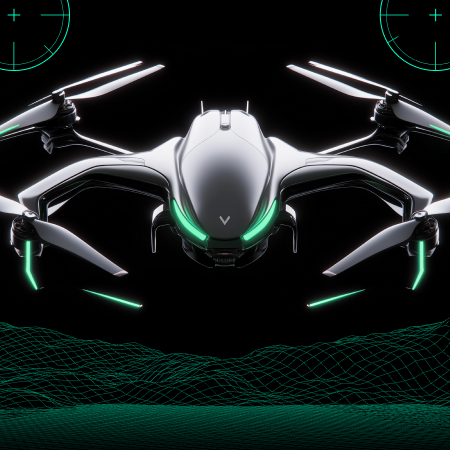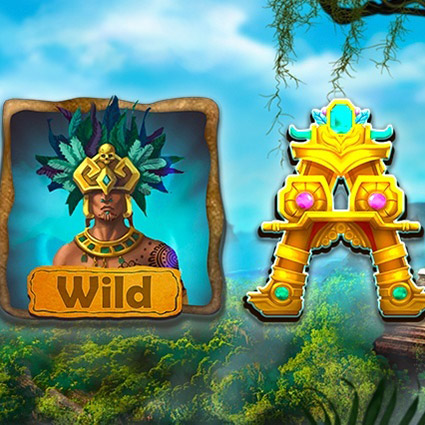Visual perception, without any doubt, is the major factor when we judge a person in real life and games are not an exception. And despite there is a consensus between both cinematic and gaming publishers, we can see a lot of deviations when a bright and fruitful character may turn out to become a villain.
Speaking of villains, if we try to imagine an evil fictional character, it will often be a character in a black coat and a dark hat. This statement, however, can be easily deflected by many instances, such as antagonist from Far Cry 4, Pagan Min, whose all-around bright visual persona was capable of outshining other assets on the screen. But it still doesn’t affect an overall picture given how massive the dark character concept is and still prevails in the modern games.
According to “Impact of color on marketing” research , up to 90% of instant consumers’ assessments about the products depend on their color. So each time you come across MSNBC, Google, Microsoft, and eBay logos, be aware that the heartless marketing decisions are hidden behind those joyful and marvelous images.
As we are now aware of big brands using certain colors to cause specific perception, let’s take a deeper look at how the gaming market has been affected by this technique.
Black

A common color of grief and a textbook indication of a malevolent character brought us such such anti-heroes as Albert Wesker from Resident Evil series, Kerrigan from StarCraft, Illusive Man from Mass Effect, Quan Chi and Shinnok from Mortal Kombat, Diablo from the game of its name, and many more. Given their manipulative, vile, and noxious nature, they fit the narrative of black outfit turning people into spawnings of fear in the best way, reminding us about Spider-Man and Venom textbook confrontation, a clash of two opposite mindsets.
Despite having Solid Snake, Sonya Blade, Adam Jensen, and a few other examples of protagonists preferring dark suits, they still cannot outweigh the number of villains gravitating towards shadowy costumes.
It’s worth mentioning that providing a huge realm of variety being one of the gaming inherent advantages, it has grown up to flee away from a stereotypical dark depiction of evil characters, giving a space for any the colors to be used regardless of the hero’s nature.
White

A majority of white characters don’t really belong to either exclusively good or evil sides, despite a common notion that this color is an attribute of a “Prince on a white horse”, an inherently positive character for our perception. Like previously mentioned notorious Pagan Min or Trevor Philips, we can also recall Queen Azshara and Jaina Proudmoore from Warcraft mythology who can’t either be related to either good or evil spectrum of characters due to having complicated lifelines.
But still, the tendency when a fruitful and glorious character will wear a white outfit like Elizabeth from Bioshock or Mercy from Overwatch still prevails, not by a big margin though.
Blue

According to color psychology, this one tends to show composure, serenity, intelligence, and to some extent, creativity. In games however, we can often see a huge disparity between behavior of blue suited characters, normally depending on the seriousness of the game.
On one hand, we have Princess Zelda and Sonic the Hedgehog, more cartoony games where the heroes are portrayed as friendly and delightful characters, who are miles away from causing harm.
In more serious games blue color is primarily used for making cold-blooded and merciless like Lich King from Warcraft, Sub-Zero from Mortal Kombat, and Nova Terra from Starcraft, undoubtedly borrowing devs’ inspiration from the The Snow Queen fairy tale by Andersen.
Green

A true symbol of nature, harmony, and growth is now a common tool for designer when making characters that can refer themselves to the environment. Starting from mythic Cenarius, Lord of the Forest in Warcraft universe, he serves as the raw model for a typical green themed persona: a half-elf and a half-deer, he is covered with green leaves all over his body and conducts one of his main duties – defending the sacred grove from intruders. Dryads can also be referred as the more mundane female version of their patron.
Gaming industry, however, isn’t exclusively limited with nature themed characters, as we have come to witness orcs, ninja turtles, Link from Zelda(sometimes wearing blue coat), or even Reptile from Mortal Kombat, which only proves the lack of strict allegiance towards good or evil side based on the character’s color.
Pink

A color of love and tenderness, it couldn’t be ignored by major game development companies, specially Blizzard Entertainment, who dared to commit for creating 3 pink characters for Overwatch: D.Va, Zarya, and Sombra. It doesn’t come as a surprise that all these heroes are female, who possess moderate temper, mostly showcasing assertive yet not aggressive voice lines. Other instances of rich pink character pool is presented in Dota2, featuring mostly female tender creatures like Luna, Dark Willow, Templar Assassin but still including a couple of wise old men like Dark Seer and Anti-Mage.
On the other hand, Mileena from Mortal Kombat is an exact opposite of a soft pink character, this vile creature of the evil forces is a true doomling depiction.
Red

A prominent symbol of passion has never been as ambiguous in games as its counterparts, always presenting vigorous and inflammatory characters, who ignite the players’ interest by their reckless activities and can be really surely addressed to a category of villains.
Take Kael’thas, for example, an inherently complex Warcraft character who got an immense magical power that has driven him wild, or most of Dota 2 red themed heroes, who represent demonic and hellspawn creatures.
That being said, the redheads are another different story, giving us enthralling and lovely female characters such as Aloy from Horizon Zero Dawn, Nariko from Heavenly Sword, and previously mentioned Sarah Kerrigan when she was in a terran form.
At no point developers have given us a boring redhead character, providing some memorable roles due to their restless nature.
Conclusion
Color perception is an important aspect when creating a new game character, it should not only have an outfit that matches his persona but is also in harmony with the environment, since even more mundane heroes/villains tend to have some taste, making them interesting for the audience, regardless of their good or evil side allegiance.
All things considered, unlike cinematic common notion that the bright looking character tends to be on a good scheme of things, game industry due to broader tools for portraying the outfit, lack of graphical limitations, and innovational mindset leans more towards erasing the frames of conformity when picking sometimes bizarre, yet marvelous appearance for the main characters.
That being said, drifting away from darker tones in villains’ appearance might also be caused by the fear of spurring the racial tensions, discarding the investors by potential intricacies that might be brought in by sensitive topics included into the game. Therefore, prepare for even more both good and evil character spectrum to be filled with the various color portrayal in the near future.
 How to Design Learning Games That Teach Real-World Skills to Young Learners
How to Design Learning Games That Teach Real-World Skills to Young Learners  Behind the Beeps: How Arcade Game Design Still Shapes Interactive Entertainment
Behind the Beeps: How Arcade Game Design Still Shapes Interactive Entertainment  Crafting Immersive Worlds: The Power of Game Environment Design
Crafting Immersive Worlds: The Power of Game Environment Design  Mastering Narrative Game Design for Unforgettable Player Experiences
Mastering Narrative Game Design for Unforgettable Player Experiences  What Is Game UX? The Complete Guide for 2024
What Is Game UX? The Complete Guide for 2024 





























